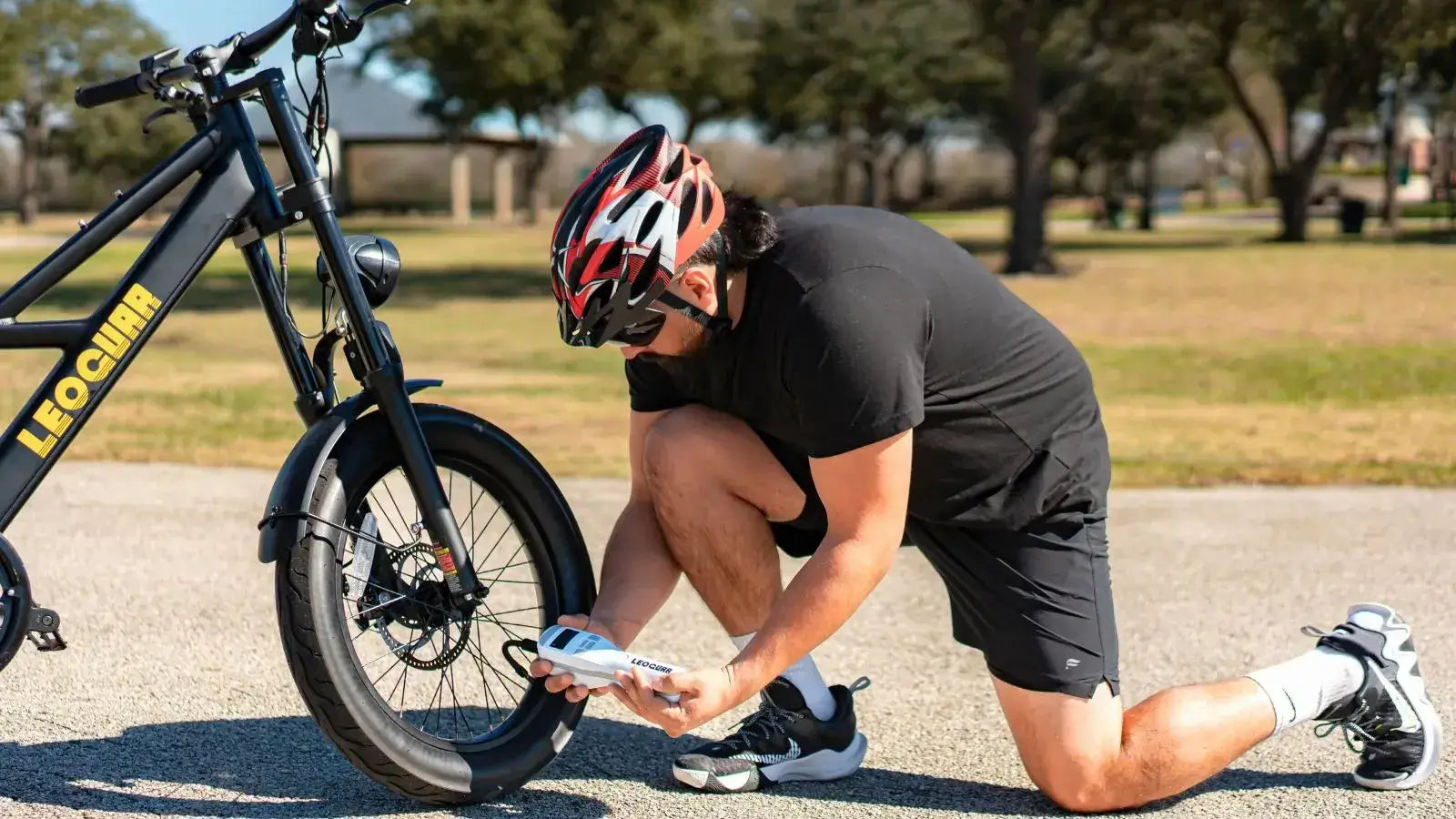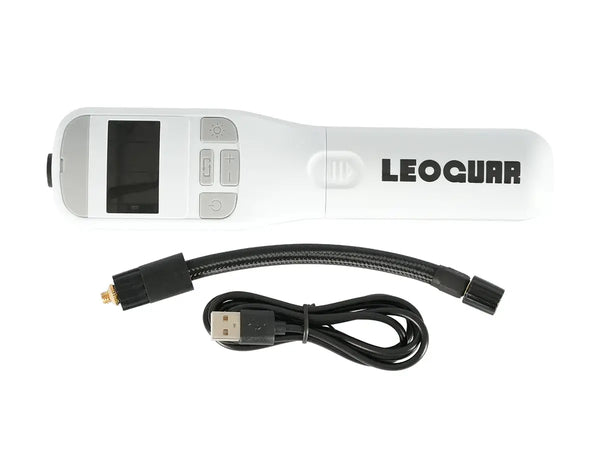
How to Tell If a Bike Pump Near Me Will Work for E-Bikes or Fat Tires
Nothing is worse than watching your e-bike or fat bike tire go flat when you're far from home. You grab your phone and search for a "bike pump near me." Several pins show up on your map. But your bike isn't a regular road bike, so you wonder if that public pump will work for your heavy e-bike or big fat tire.
The answer is maybe, but you need to know what to check. Many public pumps can work, but three things matter most: valve type, pressure (PSI), and air volume. This guide shows you how to check your bike's needs, find the right pump online and in person, and what to do when a pump won't work.
Understanding Your Tire Needs
You need to know why e-bikes and fat tires are different before you can pick the right pump. Two main things matter: tire pressure (PSI) and air volume.
Pressure means how much force the air puts on the inside of your tire. E-bikes weigh more than regular bikes, so they often need higher pressure to work well, carry the extra weight, and stop flat tires. Volume is how much total air your tire holds.
Fat tires work the opposite way from high-pressure tires. They need lots of air, but at very low pressure, to give you that soft ride and float over sand or snow. Knowing these differences helps you pump up your tire the right way.
The exact PSI for your tire isn't a guess - it's printed on the side of your tire. This number matters most. Getting the pressure right keeps you safe and makes your bike work better, which is why bike experts study the science behind optimal tire pressure so much. Here's how different bikes compare:
| Bike Type | Typical PSI Range | Air Volume Need | Key Consideration |
|---|---|---|---|
| Standard Road Bike | 80-120 PSI | Low | High Pressure |
| E-Bike (Hybrid/Commuter) | 50-85 PSI | Medium | High Pressure & Puncture Resistance |
| Fat Tire Bike | 5-20 PSI | Very High | High Volume, Low Pressure |
The First Step: Valve Type
The most basic check is whether the pump fits your tire's valve. If the pump can't connect to your valve, nothing else matters. Most bikes use one of two valve types.
Schrader Valve: This valve is wider and has a spring-loaded pin in the center. It looks just like the valves on car tires. You'll find Schrader valves on fat bikes, cruiser bikes, mountain bikes, and many hybrid e-bikes.
Presta Valve: This valve is thinner and has a small screw-on top. You have to unscrew this top before you can add air. Road bikes and high-performance e-bikes that need high pressure usually have Presta valves.
Many modern floor pumps and public bike repair stations have a "dual-head" that works with both types. But you can't count on this, especially with older or broken pumps. Checking your valve type is the first and easiest step. If you want to learn more, you can read about the different types of bike tire valves and how they work.
Checking Pumps from Your Phone
Your "bike pump near me" search shows you a map, but it doesn't tell you if the pump will work. You can do some research from your phone before you walk or ride to a pump with a low tire.
Look at the Map Icon and Name: What kind of place is it? A pin that says "Bike Repair Station" at a college or park looks much better than just "air" at a gas station. The first one is made for bikes, while the second one is made for cars.
Check for Photos: User photos help you the most. Look closely at any pictures of the pump or repair stand. Can you see the pump head clearly? Does it look like a modern bike pump with a gauge, or does it look like an old gas station air hose?
Read Reviews and Comments: This is where you find the best information. Search through the reviews for words like "bike," "Presta," "fat tire," or "pump." A cyclist might have written "Great pump, worked for my Presta valve" or warned others by saying "Gauge is broken."
Find Out Who Owns It: The type of place matters a lot. Pumps at bike shops, well-funded colleges, or along major city bike paths usually work better and get fixed when they break. Groups that support community cycling resources often work with cities to put in and maintain these pumps, making them more reliable.
Checking the Pump When You Get There
A quick look when you arrive tells you everything you need to know. As bike mechanics, this is how we check if a public pump will work for special bikes.
The Pump Head
First, look at the end of the pump where it connects to your tire. Does it have two holes - a big one for Schrader and a small one for Presta? This dual-head design works best for most people. Some pumps have one hole with parts you can flip around inside. You might need to unscrew the cap, flip the small rubber and plastic pieces, and put it back together to switch valve types. If it's just one big metal piece with no lever, it probably only works for car tires.
The Pressure Gauge
The gauge is your next important check, and this is where most pumps fail for e-bikes or fat bikes.
For E-Bikes: Your tires probably need 50-85 PSI. Look at the gauge numbers. Does it go up to at least 120 PSI, or better yet 160? If the gauge only goes up to 60 or 80 PSI, you won't be able to make your tire firm enough for a safe ride.
For Fat Bikes: Your tires need very low but exact pressure (like 8 PSI for sand or 15 PSI for trails). Look at the low numbers on the gauge. If the first number marked is "20," the gauge won't help you at all. You need a gauge with clear marks from 0-30 PSI to get your pressure just right. Getting this precision right is covered in every definitive guide to fat bike tire pressure.
The Pump Body
The shape of the pump tells you what it's made to do. A thin, tall pump body means it's made for high pressure. It moves a little bit of air with each pump but can reach high PSI easily. This works great for e-bikes with thinner tires but takes forever to fill a fat tire.
A wide, short pump body means it's made for high volume. It pushes lots of air with each pump, making it perfect for filling fat tires quickly. But it might get hard to pump when you need the higher pressures that some e-bikes require.

When a Pump Won't Work
You've done your research and checked the pump, but it just won't work for your bike. Don't panic - you're not stuck. Here are your best backup plans.
Visit a Local Bike Shop: This is your most reliable choice. Every bike shop has a professional floor pump that works with all valve types and has an accurate gauge. Most shops let you use their pump for free or for a very small fee because they want to help local cyclists.
Use a Gas Station Air Compressor (Be Careful): This can work if you're desperate, but you must be very careful. Gas station compressors almost always only work with Schrader valves. If you have Presta valves, you'll need a small brass adapter that screws onto your valve to make it fit. We think every cyclist should keep one in their tool kit. Important Warning: These compressors are made for car tires and blast out lots of high-pressure air. For bike tires, especially low-pressure fat tires, you can blow out your tire in seconds. Use very short bursts - less than one second - and check your pressure often.
Ask Another Cyclist: Cyclists are usually friendly and helpful. If you see another person with a bike, don't be afraid to ask for help. Many serious riders carry a small pump or CO2 cartridges with them.
Buy Your Own Pump (The Best Backup Plan): The ultimate solution is being able to help yourself. A good floor pump at home is essential for regular bike care. For emergencies when you're out riding, a small pump that mounts on your bike frame or a CO2 kit is a great investment that means you never have to depend on a questionable public pump again.
Your Pump-Finding Checklist
Finding a working bike pump near you for an e-bike or fat bike is totally possible when you know what to look for. Being prepared turns a scary moment into a simple problem you can solve.
Remember to always:
- Know your tire's valve type (Schrader or Presta) and recommended PSI
- Check potential pumps online by looking at photos and reviews
- When you get there, check the pump head, pressure gauge range, and pump body size
- Have a backup plan, like knowing where the nearest bike shop is or carrying your own small pump
With this knowledge, you can ride with confidence knowing you can handle one of the most common problems cyclists face.
FAQ
1. Q: Can I use a car tire pump for my e-bike?
A: Yes, but be very careful. Car pumps usually only work with Schrader valves and pump air very fast at high pressure. Use short bursts and check your pressure often to avoid blowing out your tire.
2. Q: What's the difference between Schrader and Presta valves?
A: Schrader valves are wider with a spring-loaded pin in the center, like car tires. Presta valves are thinner with a screw-on top you must unscrew before adding air. Road bikes and high-performance e-bikes usually have Presta valves.
3. Q: Why do fat bike tires need such low pressure?
A: Fat tires use low pressure (5-20 PSI) to create a large contact area with the ground. This gives you better traction on sand, snow, or loose surfaces and provides a cushioned ride.
4. Q: How can I tell if a public pump will work for my bike before I get there?
A: Check online photos and reviews for the location. Look for mentions of "bike," "Presta," or "fat tire" in reviews. Pumps at bike shops, colleges, or city bike paths are usually more reliable than gas station pumps.
5. Q: What should I carry with me to avoid getting stuck with a flat tire?
A: Carry a small frame pump or CO2 inflator kit, tire levers, and a spare tube or patch kit. If you have Presta valves, also carry a small brass adapter so you can use gas station pumps in emergencies.











































Leave a comment